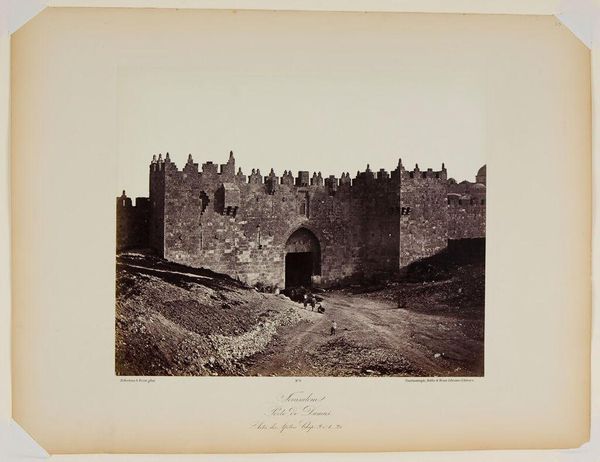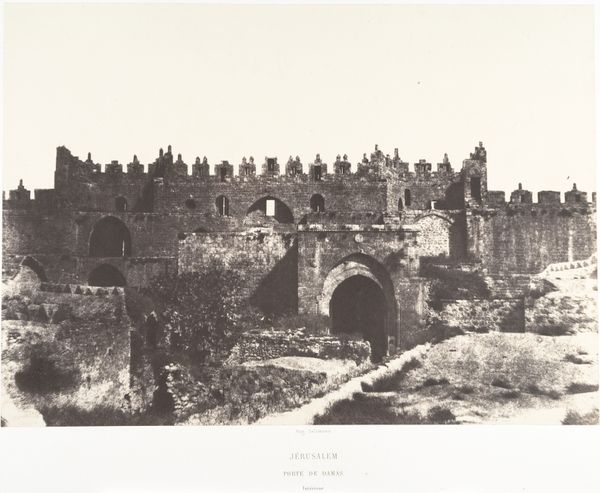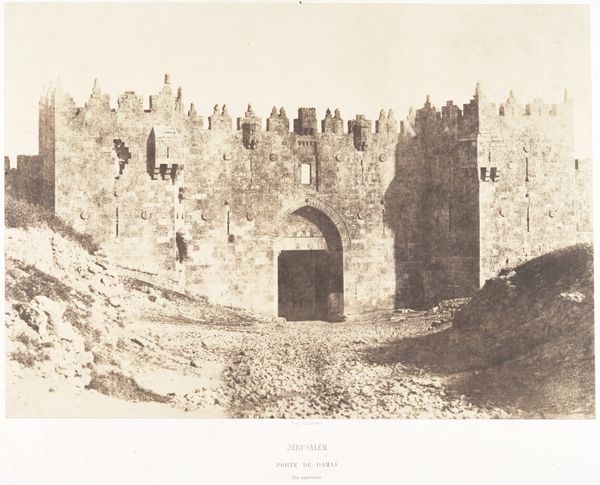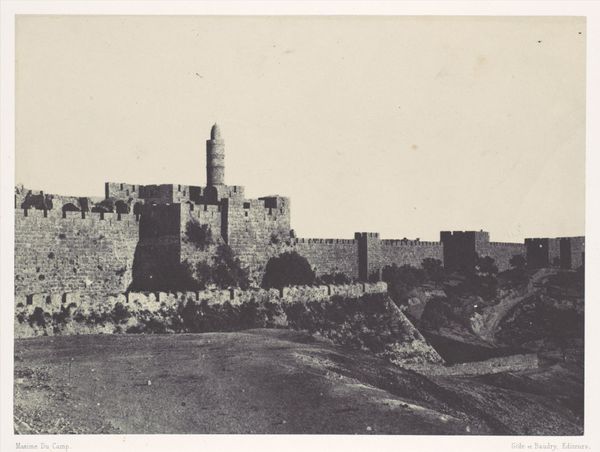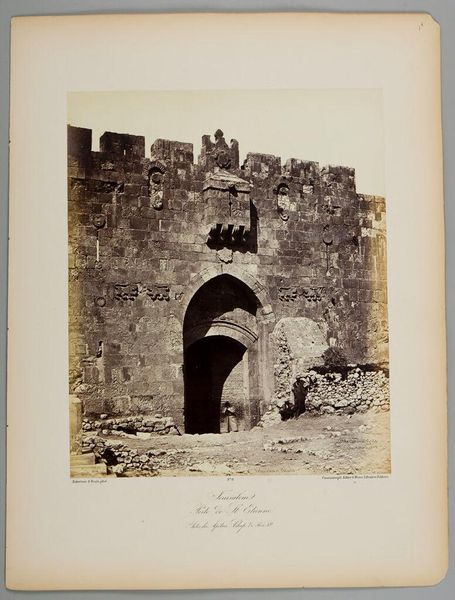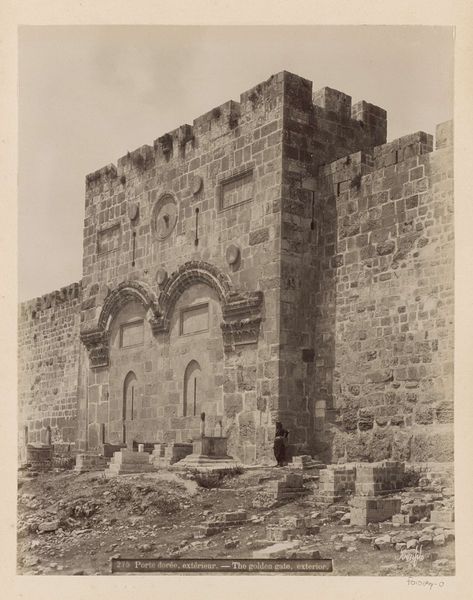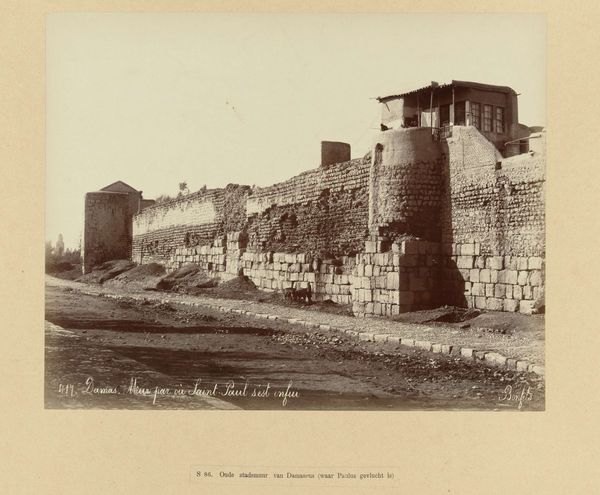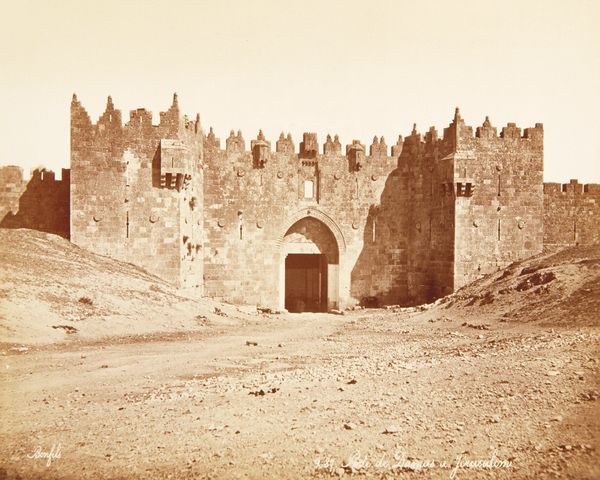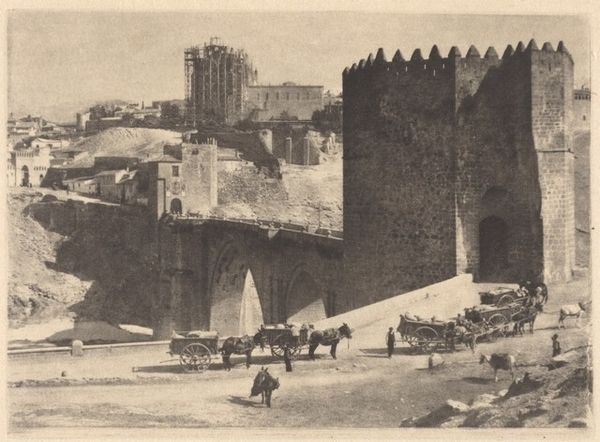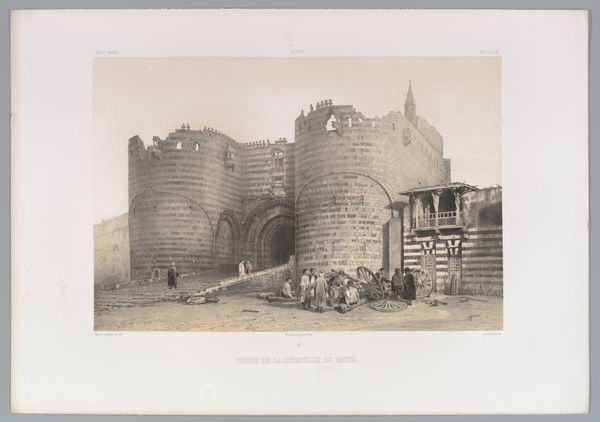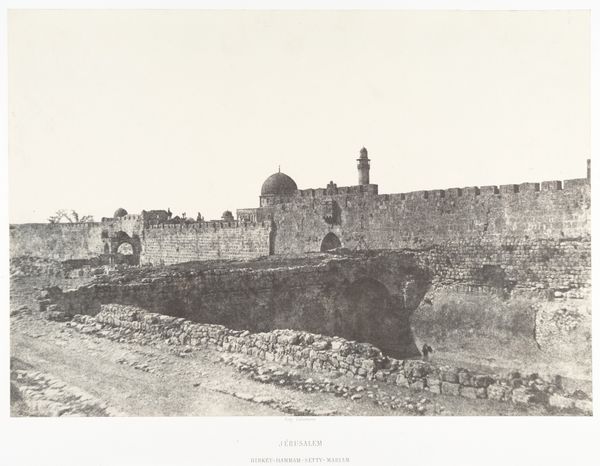
photography
#
landscape
#
photography
#
ancient-mediterranean
#
cityscape
Dimensions: height 225 mm, width 284 mm
Copyright: Rijks Museum: Open Domain
Curator: Looking at this photographic print from Maison Bonfils, circa 1867-1895, titled "Publiek voor de Damascuspoort in Jeruzalem" from the Rijksmuseum collection, I’m immediately struck by the monumentality. Editor: It's a powerful image. The stark contrast and heavy stone give a sense of timeless endurance. It evokes a feeling of being suspended between epochs. Curator: Indeed, photography during this period became a significant tool for documentation, often commissioned to capture distant lands and architectural marvels. The albumen print process would have been painstaking. Consider the labor invested in its making – the preparation of the light-sensitive emulsion, the careful posing of the figures… it speaks to a very different understanding of image production than our own digital era. Editor: Absolutely, but I also think it speaks to a Western gaze on the "Orient". These images weren't just neutral records. They shaped perceptions and reinforced colonial power dynamics. We must question who is being centered, whose stories are amplified, and whose are obscured. The photograph aestheticizes a very complex space with its attendant power struggles, economic realities, and sociopolitical forces. The image offers a kind of "frozen" perspective which then influences its audience. Curator: You're right to challenge that perspective. The gaze, undoubtedly, shaped what was recorded and how it was framed. Yet, even within that context, the materiality persists. Look at the details captured on the gate's stone surfaces. That’s also part of what speaks to this image. It's fascinating to consider the image’s dual existence: as a historical record and a product of industrial labor. Editor: I agree; seeing both sides makes a complete interpretation. Understanding its place in visual history is also crucial, it also offers insight into Orientalist tropes that are still prevalent today. We are always enmeshed in larger, complicated historical narratives, and each image carries its share of responsibility. Curator: It’s a dense web to untangle, I appreciate getting both views on such a photo. Thank you. Editor: Thank you, and understanding is key. Recognizing that duality provides a deeper understanding of the historical context, power, and materiality embedded in this image.
Comments
No comments
Be the first to comment and join the conversation on the ultimate creative platform.

